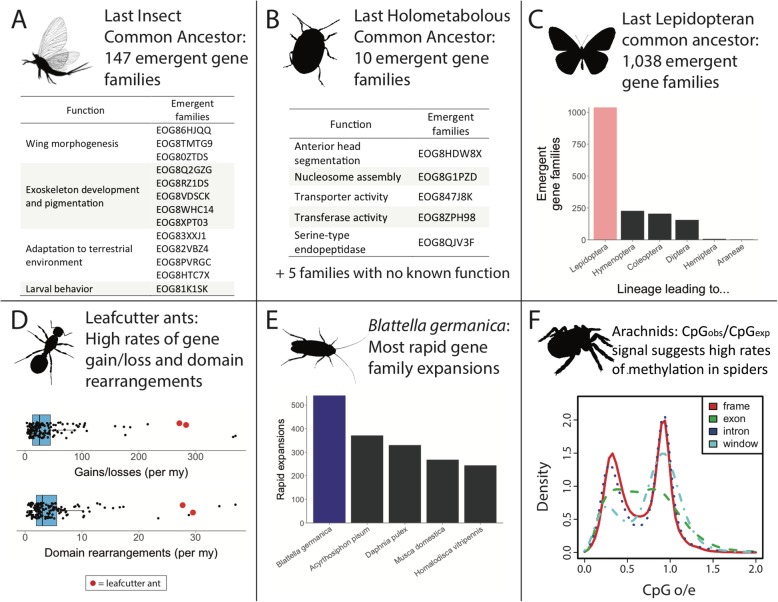Fig. 3.
Summary of major results from gene family, protein domain, and methylation analyses. a We identify 147 gene families emerging during the evolution of insects, including several which may play an important role in insect development and adaptation. b Contrastingly, we find only ten emergent gene families during the evolution of holometabolous insects, indicating many gene families were already present during this transition. c Among all lineage nodes, we find that the node leading to Lepidoptera has the most emergent gene families. d We find that rates of gene gain and loss are highly correlated with rates of protein domain rearrangement. Leafcutter ants have experienced high rates of both types of change. e Blattella germanica has experienced the highest number of rapid gene family changes, possibly indicating its ability to rapidly adapt to new environments. f We observe signals of CpG methylation in all Araneae (spiders) genomes investigated (species shown: the brown recluse spider, Loxosceles reclusa) and the genome of the bark scorpion, Centruroides exilicauda. The two peaks show different CG counts in different gene features, with depletion of CG sequences in the left peak due to methylated C’s mutating to T. This suggests epigenetic control of a significant number of spider genes. Additional plots for all species in this study are shown in Additional file 2: Figure S5

